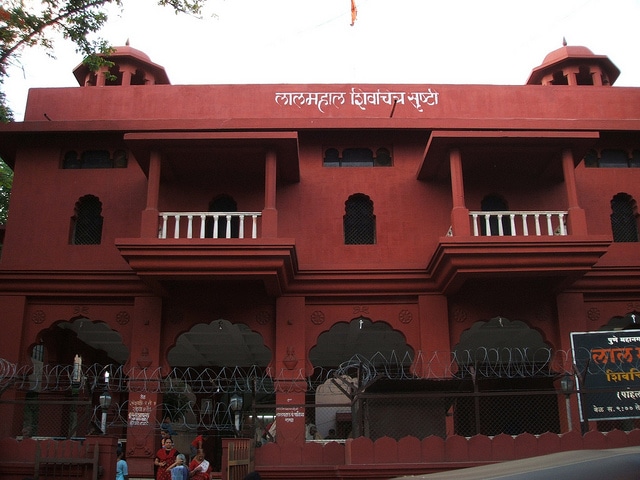Pune is one of the most important historical cities in Maharashtra. It was the hub of Maratha rulers and subsequently, the British. Hence, you will find many places that have marks of their rule in Pune. The city is home to hundreds of monuments and historical structures, some of which are thousands of years old, and they include forts, palaces, buildings and even temples. Each historic spot of Pune has inspiring and interesting stories to narrate and you can even listen to it if you pay close attention.
Here are 5 of the best historic places and monuments in Pune that should be a compulsory visit when you are in this amazing city.
1. Shaniwarwada
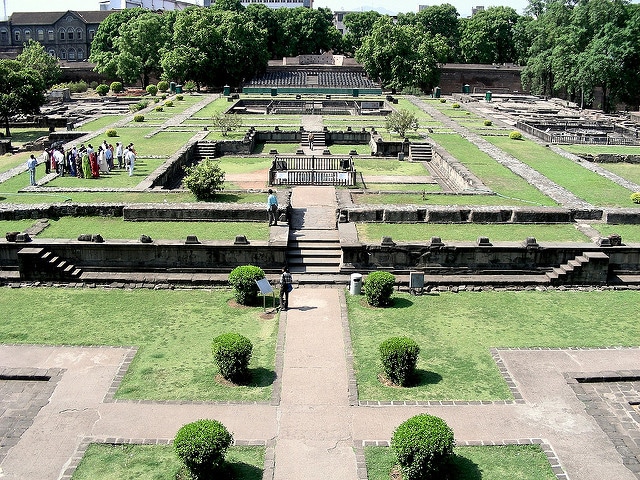
There can be no mention of Pune without mentioning its most iconic structures, the Shaniwarwada. A building that is steeped in tragedy, history and mystery, Shaniwarwada today is a popular heritage building visited by thousands of tourists daily. It was built in 18th century, in 1730 and was an important centre of Maratha Empire. It remained the seat of Peshwas for long until the British took over in 1818. It is a strong edifice built in stone and limestone and it is said that the teak used in the construction was brought from Junnar and the stones from Jejuri. The foundation stone of Shaniwarwada was laid by Peshwa Baji Rao on a Saturday and hence the name. Wada means residential building. Though a symbol of the powerful Maratha Empire, Shaniwarwada had only stories of deceit and pain.
In 1773, Narayan Rao, the fifth Peshwa was brutally killed on the orders of his uncle Raghunath Rao. It is said that Narayan Rao ran out screaming for his uncle for help, ‘Kaka, mala vachva’ which means ‘Uncle, please save me’, not knowing that these assailants were send by his uncle himself. Locals claim that even today, on full moon nights, Narayan Rao’s screams can be heard from Shaniwarwada. Another unfortunate incident was the fire in the building in 1828 which almost destroyed the fort. Today, the fort has been maintained and is one of the popular tourist destinations of Pune. It is located on the Shanivar Peth and open to visitors. It is sad that though built as the pride of the Peshwas, the fort really couldn’t be it for long due to many ill-fated events in the structure. Even today, though it is known as an historical monument, Shaniwarwada is also known as a haunted place. Not quite a great way to remember one of the best historical monuments of Pune. But then, Shaniwarwada was always the one to carry tragedies on its giant shoulders.
2. Lal Mahal
Though the present building was built by the Pune Municipal Corporation, the original Lal Mahal was present at the same place but since it was destroyed, the Pune Municipal Corporation rebuilt the palace in 1988. Lal Mahal actually was built by Shahaji Bhosale, father of Shivaji for his wife Jijabai and son, in 1630 AD. Shivaji spent 10 years of his childhood at the palace. Built in red brick, today it is an apt tribute to the great emperor with many representations on his life. It is a popular tourist destination of Pune and families come here to spend some peaceful time in a place that was a playground for one of the most powerful and best rulers in India. It is located at Kasba Peth on NH 4 and is easily accessible.
3. Aga Khan Palace
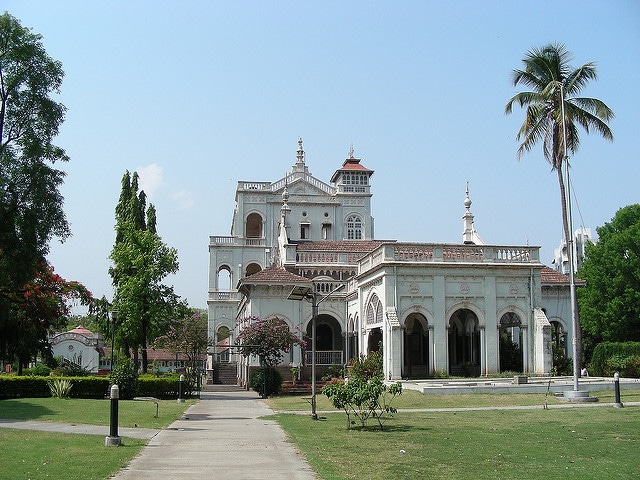
It is one of the best historical places in Pune and its architecture one of the best too. This place, though a beautiful palace was a tragic memory for Mahatma Gandhi as two of his closest people, his wife Kasturba and his dutiful secretary, Mahadev Desai, died here during their imprisonment. They were imprisoned here with Gandhiji in 1942 following the launch of Quit India Movement. Samadhis have been built in their honour at the palace which is visited by lakhs of visitors every year. The samadhis are built in marble and was designed by the renowned architect Charles Correa. A statue of Mahatma Gandhi stands in the premises. The Palace also exhibits many daily items used by Gandhiji such as his bed, writing desk and more. Kasturba’s saris and her footwear are also displayed here. On the walls, there are many photographs of India’s Independence movement. The Imam Sultan Muhammad Shah Agakhan III built this palace in the year 1892. He was a renowned politician. The Aga Khan Palace is situated on Nehru Road and is open to public from 9 am to 6 pm.
4. Shivneri Fort
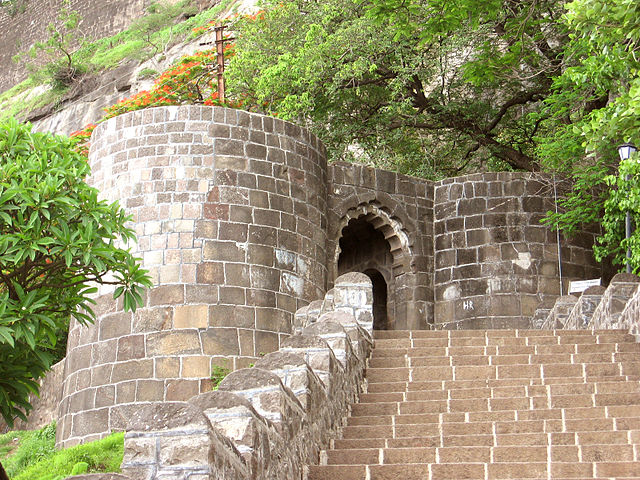
How can the birthplace of Chhatrapati Shivaji be not a revered place? Shivneri Fort was not built by the Marathas and is believed to have built during the Satavahana rule. There are remains of rock caves which are still evident on the fort, which points to the fact that it was a Buddhist centre once. From there on, many rulers occupied the fort. Shivaji’s grandfather, Malojirao Bhosale was given this fort in 1599 and since the fort was strong and invincible, Shahaji felt it was the best place for his wife to give birth. It is a triangular fort and built on a hill and is well-maintained. There are many parts of the fort that are worth seeing. There are seven gates at the fort, each with a name. The fort had strong walls and they are intact even today. A temple of Shivai goddess is present within the fort and it was after this goddess that Shivaji was named. There is also a lake within the fort. You can also see the Ambarkhana or the place used to store food. It is quite large and a year’s ration could be stored here. The two water springs of the fort, Ganga and Jamuna, are worth seeing. A point in the fort which is believed to have been the place from where criminals were thrown off as punishment is still present. The fort is also popular as a trekking site today and is visited by adventure enthusiasts from all over the country. It is located near Junnar and is a must visit.
5. Vishram Bagh Wada
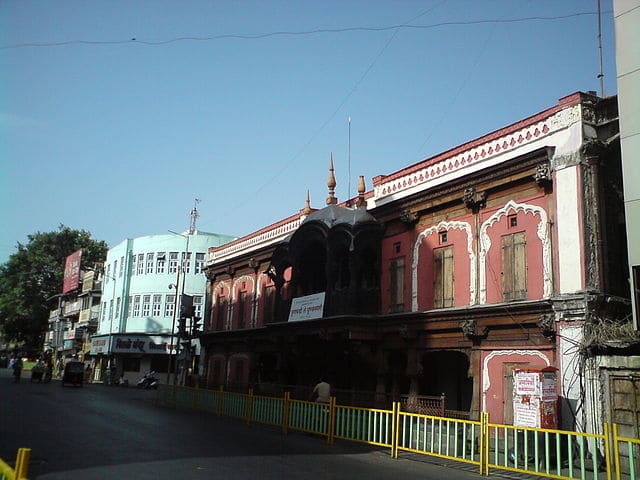
Built in 1807 AD, Vishram Bagh Wada was the residence of Bajirao II till his defeat to British. It is a grand palace consisting of three storeys and was renowned for its woodwork. The façade of the palace in terracotta, white and brown adds to the beauty. What catches you attention at once is the gigantic wooden pillars and the wooden veranda. There is a large hall on the first floor which is said to have been a dancing hall, where dances were organized for Peshwa’s entertainment. Today, not all the grand architecture remains but still, it reminds you of the stunning Maratha architectural style. Spread in an area of 20,000 sq ft, the palace is a reminder of the Peshwa rule in Maharashtra, of their bravery, their perseverance and also of their tragic stories. Today, it is almost a government building with a post office and municipal offices. There is also a museum that houses artefacts from Maratha Empire. It is located at Sadashiv Peth.
Just go through a few pages of Indian history and you will know that Pune holds an important place in it. As far as the history of Maharashtra goes, Pune was where the action was right from Shivaji’s rule to the current. A visit to the historical places in Pune will take you on a journey that spans centuries. Pune is a journey that you will cherish for a long time and makes you feel proud to be an Indian.

